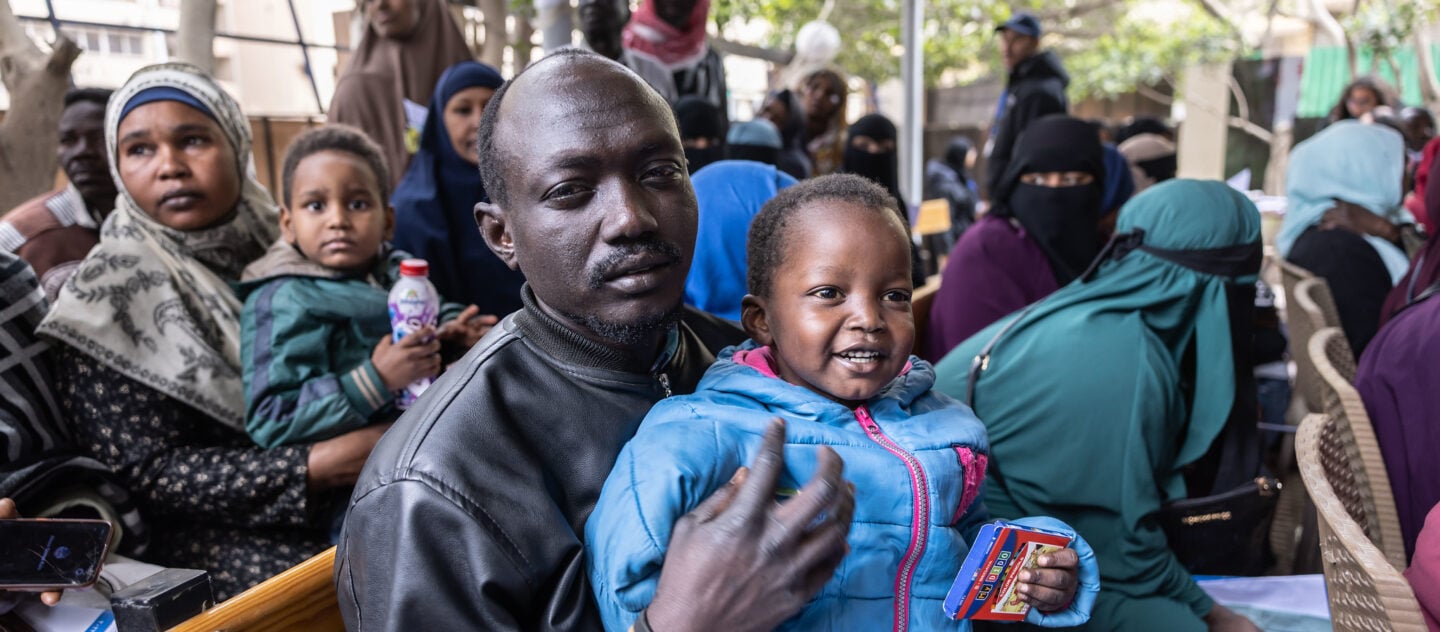Egypt hosts more than 792,783 registered refugees and asylum-seekers from 62 nationalities. Starting October 2023, the Sudanese nationality has become the top nationality, followed by Syrians. Other relevant countries of origin include South Sudan, Eritrea, Ethiopia, Yemen, Somalia and Iraq.
UNHCR has been operational in Egypt since 1954 after the Government of Egypt and UNHCR signed a Memorandum of Understanding (MOU). Since then, UNCHR has provided protection services including all aspects of registration, documentation, refugee status determination and resettlement to those who are forcibly displaced.
Following the outbreak of armed conflict in Sudan in April 2023, large numbers of civilians have been forced to flee to Egypt and other neighboring countries in search of safety. In response to this emergency, UNHCR has expanded its work with the Government of Egypt and partners to register and assist forcibly displaced people arriving in the country. UNHCR is present in various parts of the country, including Cairo, Alexandria, and other governorates delivering lifesaving assistance to those most in need. Furthermore, UNHCR Egypt works towards ensuring the inclusion of refugees in the education and health systems and carries out community projects to enhance the inclusion of the refugee community and promote the livelihoods and well-being of refugees, among many other initiatives.
On the other hand, UNHCR also supports Syrian refugees who fled their war-torn land and started seeking asylum in Egypt in 2012. Representing diverse socio-economic and religious backgrounds, the number of Syrians registered with UNHCR Egypt rose dramatically from 12,800 at the end of 2012 to more than 153,000 people at the end of 2023. As a result of the Sudanese and Syrian crises, Egypt now hosts the largest number of registered refugees and asylum-seekers in its history.
At the same time, renewed conflicts and political instability in East Africa, and the Horn of Africa as well as the unrest in Iraq and Yemen, have driven thousands of South Sudanese, Ethiopian, Iraqi, and Yemeni individuals to seek refuge in Egypt. As of 30 September 2024, the refugee population registered with UNHCR comprised 503,993 Sudanese, 158,406 Syrians, 46,059 South Sudanese, 39,768 Eritreans, 18,685 Ethiopians, 8,661 Yemenis, 8,476 Somalis, 5,719 Iraqis, and refugees of more than 54 other nationalities.
Refugees and asylum-seekers live in an urban setting in Egypt and are largely concentrated in Greater Cairo, Alexandria, Sharkia, Damietta, and other cities in the North and East parts of the country. In recent years, however, the economic conditions in the country have considerably increased the vulnerability of both refugees and host communities. With many refugees lacking a stable source of income, coupled with soaring inflation, basic needs are barely covered. Other challenges include limited livelihood opportunities and the language barrier facing non-Arabic-speaking refugees. Some also lack access to sustainable formal education that could support their development. In addition, a considerable number of refugees and asylum-seekers rely on humanitarian assistance to meet their basic needs and to receive medical or psychosocial support.
For the most updated information on refugee trends, please visit this link here.
For information on the Sudan emergency, visit this link here.

